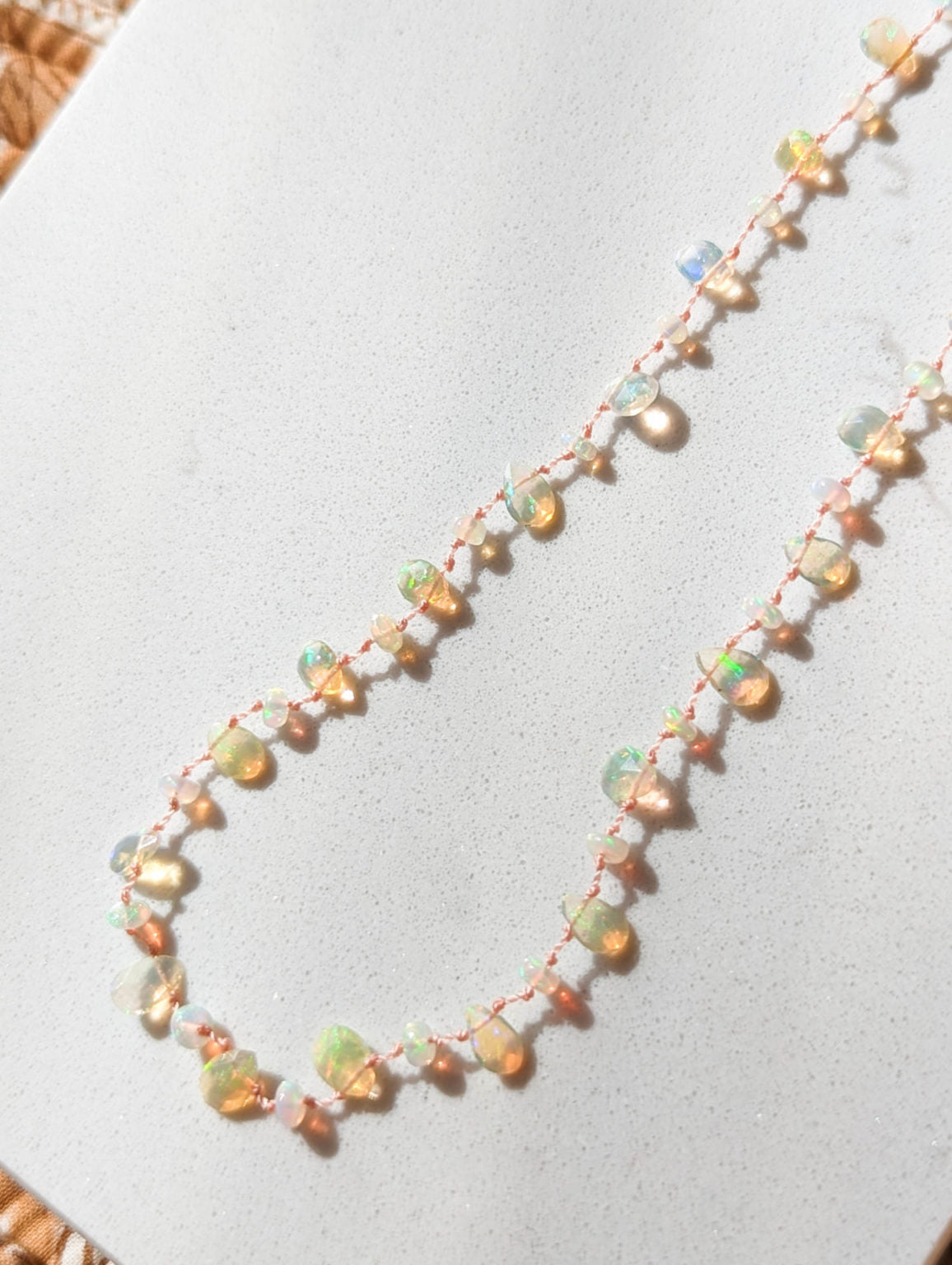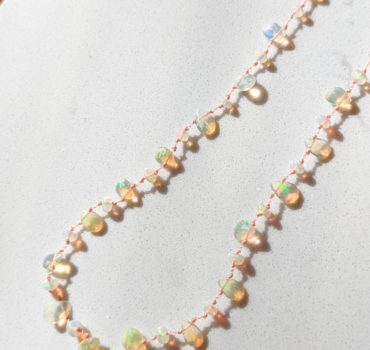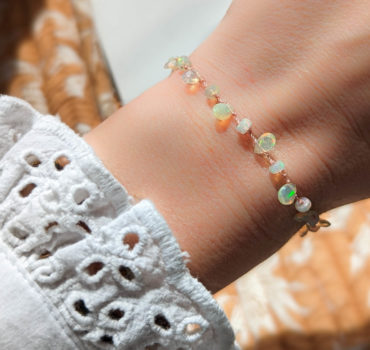How is Ethiopian opal formed?
Ethiopian opal forms in volcanic rock cavities in Ethiopia's Wollo Province through the infiltration of silica-rich water. Its internal structure, composed of layers or complex patterns, and its diverse range of colors make it a fascinating and highly prized gemstone.
You love it for its hypnotic reflections and it is a great success among all Stonology jewelry.
The process of Ethiopian opal formation begins when silica-laden water seeps into cavities and cracks in volcanic rocks. Over time, this water settles and solidifies, forming gelatinous silica spheres.
What distinguishes Ethiopian opal from other types of opals is its internal structure. Unlike Australian opals, which often exhibit a bean-shaped play-of-color structure, Ethiopian opal is characterized by internal structures in layers or complex patterns. These internal structures can give Ethiopian opal a shimmering and unique appearance.
Due to its formation in volcanic rocks, Ethiopian opal may also contain inclusions such as pieces of solidified lava or mineral crystals, which add to its beauty and complexity.
It should be noted that the formation of Ethiopian opal can vary depending on the geological characteristics of each mining site. This can result in a wide variety of colors and visual characteristics among Ethiopian opals, ranging from clear and translucent opals to opals with bright and dynamic play of colors.
How to take care of it?
When it comes to caring for Ethiopian opals, it is important to note that they are highly hydrophanous, meaning they have a strong affinity for water and can absorb liquids easily. Therefore, It is strongly recommended to avoid direct contact with substances that could stain them, such as skin oils, perfumes, household chemicals and cosmetics.
Here are some tips for caring for Ethiopian opals:
-
Avoid direct contact with potentially damaging substances: Wear your Ethiopian opals over your clothing to prevent direct contact with your skin's natural oils. Also, avoid wearing them while applying makeup, perfume, or hair products.
-
Keep your hands clean: Wash your hands thoroughly before handling Ethiopian opals. This will remove any traces of lotions, hand creams, disinfectants, or other substances that could damage them.
-
Wipe them with a soft cloth: After wearing them, gently wipe your Ethiopian opals with a soft microfiber cloth to remove dirt, residue, and oils.
-
Avoid sudden changes in humidity: Ethiopian opals are sensitive to changes in humidity. Therefore, it is recommended to store them in a stable environment, away from significant fluctuations in humidity.
-
Store them properly: To avoid scratches and damage, it is best to store your Ethiopian opals separately from other jewelry, preferably in the Stonology cotton pouch that I provide with your purchase.
When it comes to the aging of Ethiopian opals, it's important to note that they can change color over time. Some Ethiopian opals may develop a yellowish tint after a while, which is considered a natural phenomenon. However, proper care and handling can help preserve their beauty and brilliance over the years.






